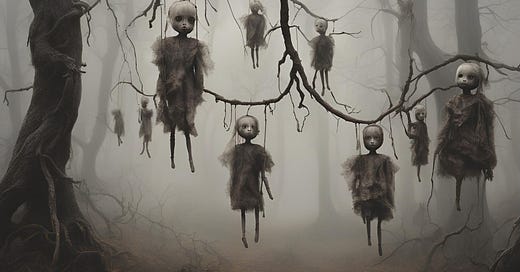Isla de las Muñecas, the Island of the Dolls. The name itself chills the blood, conjuring images of a desolate island overrun by decaying dolls. This eerie location in Mexico City is more than just a macabre tourist attraction; it's a haunting testament to a personal tragedy, a chilling example of grief's manifestation, and a place where the line between reality and the supernatural blurs.
The story begins with Don Julián Santana Barrera, a solitary man who lived on a small island in Teshuilo Lake. The legend whispers of a young girl who drowned near his island. Some accounts say Don Julián witnessed her drowning, a horrific event that forever scarred his soul. Others claim he merely heard about the tragedy, the news echoing across the water and settling heavy on his heart. The uncertainty surrounding this initial event adds another layer of mystery to the island's story.
Consumed by grief, guilt, or perhaps a combination of both, Don Julián began collecting dolls. Crucially, he wasn't buying these dolls; he found them, often discarded in the trash, unwanted and forgotten. This detail emphasizes the sense of abandonment and adds a layer of sadness to the already unsettling scene. He believed these discarded dolls could appease the spirit of the drowned girl, or perhaps, as some suggest, they served as a barrier, a way to contain or protect himself from her lingering presence.
Don Julián wasn't simply placing the dolls on the island. He meticulously arranged them, often hanging them from trees and structures, creating a truly disturbing spectacle. The dolls, in various states of decay – some missing limbs, others with matted hair and vacant stares – became his obsession. The sheer number of them, their decaying forms, and their unsettling placement create an atmosphere of profound unease.
Over time, hundreds, perhaps thousands, of dolls populated the island. The effect is undeniably creepy, a visual representation of loss, the lingering presence of death, and perhaps even a desperate attempt to ward off something unseen.
Visitors to the island often report feeling a profound sense of unease, a feeling of being watched by the dolls. Some claim to see the dolls moving, their eyes following their every move. The atmosphere is thick with sadness and the uncanny, a place where the air itself feels heavy with unspoken stories.
Don Julián himself met a tragic end in 2001, reportedly drowning in the same spot where the young girl had perished years before. His death only amplified the island's mystique, fueling the legends and attracting more visitors drawn to its dark allure.
Today, the island is maintained by Don Julián's family. The current caretaker refuses to live on the island, believing it belongs to the dead, and specifically, to the dolls. This fear, this specific attribution of the island's haunting to the dolls themselves, speaks volumes about the island's chilling reputation.
Isla de las Muñecas is more than just a collection of old dolls. It's a haunting testament to grief, a visual representation of a man's attempt to cope with loss, and a chilling reminder of the unseen forces that may surround us. It stands as a powerful symbol of the human psyche's capacity for both creation and destruction, a place where the line between reality and the supernatural blurs, leaving visitors with a lingering sense of unease and a profound reminder of the power of belief.



